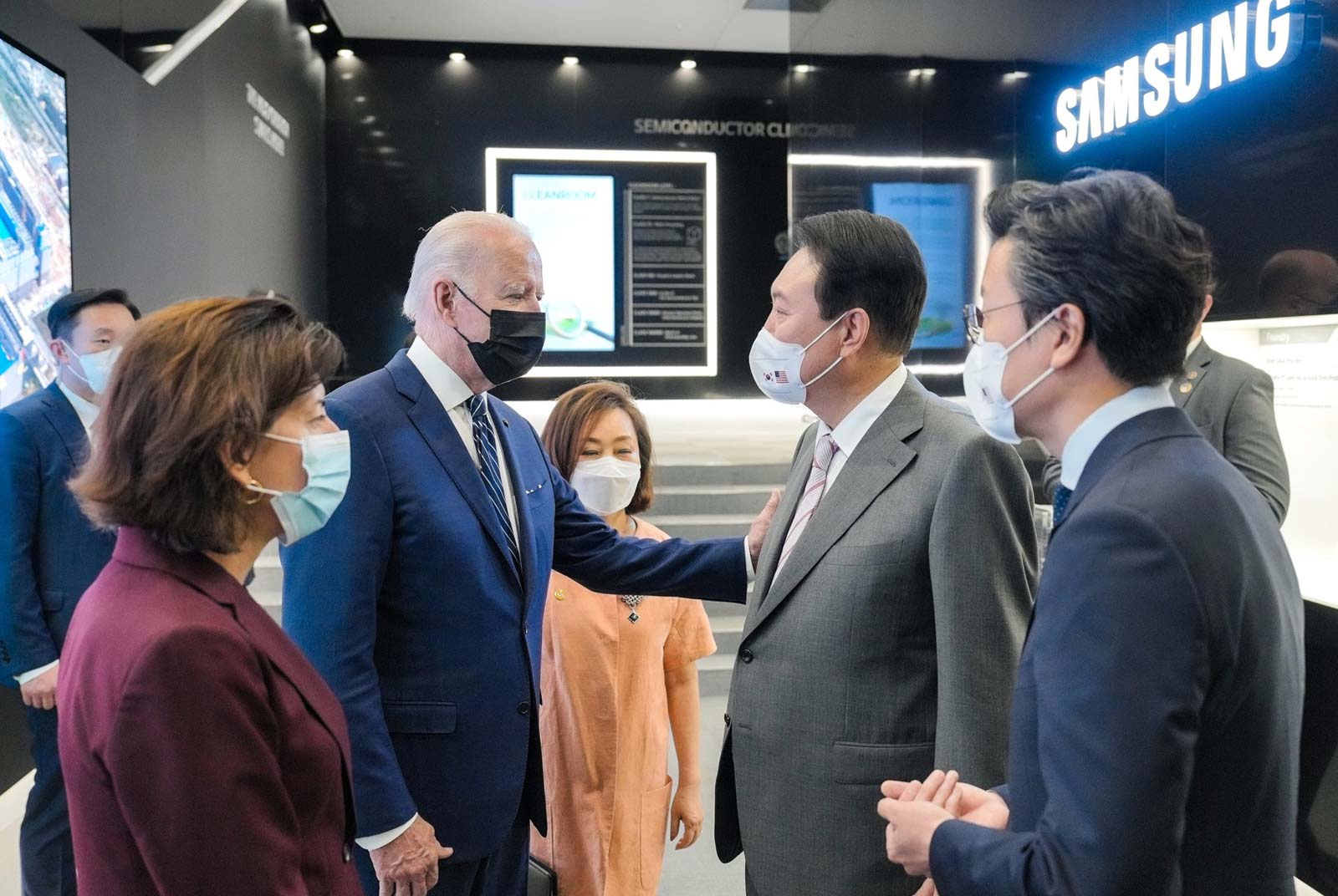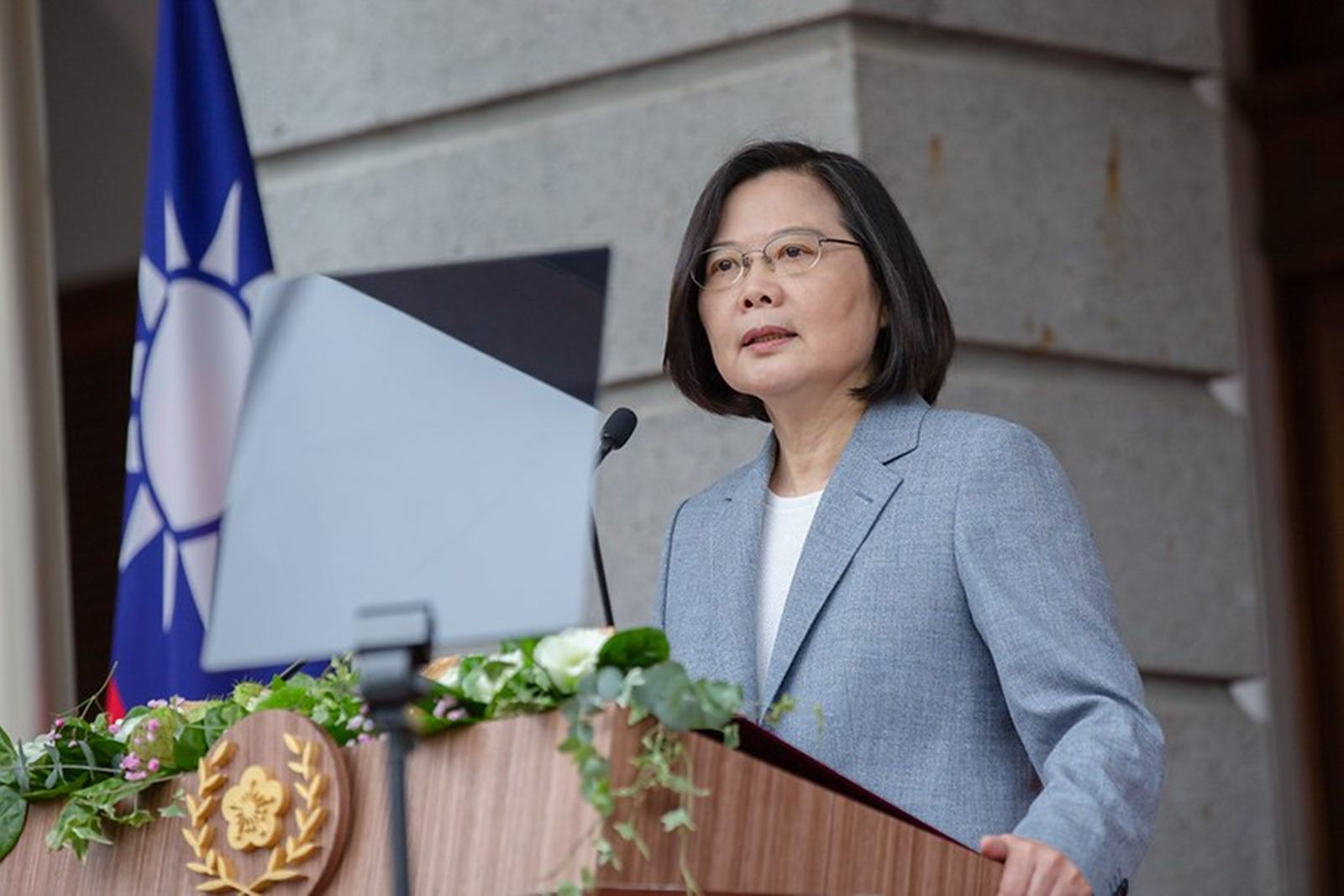The IPEF train has departed. Now transferring to the BTA track

Source:The White House's facebook
Despite Taiwan’s disappointment in not being included in the initial grouping for the U.S.’s IPEF, a breakthrough might be at hand on a BTA. AmCham Taiwan's President Andrew Wylegala and Senior Advisor Don Shapiro argue in this timely op-ed.
Views
The IPEF train has departed. Now transferring to the BTA track
By Andrew Wylegala, Don Shapiroweb only
Despite Taiwan’s disappointment in not being included in the initial grouping for the U.S.’s Indo-Pacific Economic Framework (IPEF), there was positive news in recent days for the U.S.-Taiwan economic relationship.
Knowledgeable observers had expected Taiwan’s exclusion, which was seen as necessary to gain broader support in the region for launching the initiative. In the end, what will be most important for Taiwan is that the U.S. is now firmly re-anchoring itself as a positive influence in the Asia Pacific.
Less noted yet more promising specifically for Taiwan was the opportunity for Taiwan’s Minister Without Portfolio John Deng to confer with U.S. Trade Representative Katherine Tai in Bangkok last week in the runup to an APEC meeting.
The two chief trade negotiators released word that they were directing their teams to “to explore concrete ways to deepen the U.S.-Taiwan trade and investment relationship and to meet again in the coming weeks to discuss the path forward.”
Tantalizingly, the announcement of an “exploration” of something “concrete” in the USTR official notice hinted that a breakthrough might be at hand on a comprehensive bilateral trade agreement or BTA, something that has been discussed off and on ever since 2002.
Today in Bangkok, @AmbassadorTai met with Taiwan’s Minister-Without-Portfolio John Deng to discuss their work at @APEC. They directed their teams to explore concrete opportunities to deepen the economic relationship. https://t.co/6LQ3xaCywY pic.twitter.com/JA6QTLwtlN
— Adam Hodge (@USTRSpox) May 20, 2022
In recent years, the BTA idea has enjoyed a resurgence in support, especially in the U.S. Congress where it enjoys an unparalleled level of bipartisan support in both houses.
In Taiwan, the Tsai Ing-wen administration has publicly declared its strong interest in a BTA with the U.S. To eliminate obstacles, it even braved domestic political heat in 2020 by relaxing Taiwan’s restrictions on the import of American pork. The BTA is popular in business circles, too, starting with the American Chamber of Commerce in Taiwan, which has long vigorously promoted the idea through its annual White Paper and other channels.
 (Source: Office of the President, R.O.C.)
(Source: Office of the President, R.O.C.)
Meanwhile, as U.S. tensions with China have mounted and Taiwan’s importance as a supplier of critical technologies and dependable partner in public health and other areas has risen, the U.S. and Taiwan have been finding institutional ways to draw closer together.
The Trade and Investment Framework Agreement (“TIFA talks”) process resumed last year after a five-year hiatus to deal with basic trade issues, the two sides formed a U.S.-Taiwan Economic Prosperity Partnership Dialogue (EPPD) to develop more far-reaching cooperation, and they forged a Technology Trade and Investment Collaboration (TTIC) to strengthen critical supply chains.
Given that background and with President Biden’s visit to Seoul and Tokyo demonstrating American commitment to Asia, the outlook for a U.S.-Taiwan BTA might seem bright.
Still, the divisiveness of current American politics and inter-agency dynamics means that achieving a BTA breakthrough will take concerted action along at least three lines.
First, political will must be consolidated on the American side. To sell the concept politically, advocates of a BTA will have to draw attention to the long-term economic benefits of a deal with Taiwan, as well as its contribution to boosting mutual security interests. Concluding a high-standard agreement with a mid-sized economy like Taiwan brings the added advantage of restoring America’s credentials as a champion of rules and institutions toF facilitate free and fair trade.
Though the U.S. public has turned skeptical about trade, it helps that Taiwan is a partner who shares American values around labor and environmental protection. The U.S. government can also lean on tools such as an expanded Trade Adjustment Assistance program for workers displaced by imports and automation.
The Tsai administration, for its part, must make the BTA the lodestar of its 2022-24 economic agenda. Supporting public acceptance of the safety and quality of imported food products will be essential, just as it was in unclogging the TIFA or smoothing ties with Japan over Tohoku Region produce. Both Washington and Taipei will need to offer reassurance to their private sectors (and to Beijing) that nothing in the BTA would be incompatible with carefully pursuing productive business with China.
Second, American and Taiwan businesses – with assistance from both governments and policy experts – need to drive home the dollars-and-cents case for this BTA, especially for the American worker and taxpayer.
Despite low average tariffs in Taiwan, the U.S. incurs a deficit of about $30 billion annually in bilateral trade in goods.
Where a BTA can bring gains for the U.S., including increased exports and job creation, is from elimination of non-tariff barriers in targeted sectors of U.S. strength, such as pharmaceuticals, chemicals, and financial services.
Agricultural trade represents the low-hanging fruit for a BTA. Taiwan has an outsized appetite for U.S. food products, ranking as America’s eighth-largest ag market, yet it maintains relatively high agricultural tariffs, along with labeling and phytosanitary barriers that stand to be reduced under a BTA.
AmCham Taiwan will continue to do its part. Back in 2020 we were a founding member of the U.S.-Taiwan BTA Coalition, which continues to seek additional associations and corporations willing to speak up for the BTA. We are ready to partner to document the quantitative and qualitative gains that a deal would produce, and then help present them as a clear, compelling story that will be appreciated on the Main Streets of America. We will also stress the urgency of concluding a BTA during the series of calls on Washington leaders known as our “Doorknock,” which we are resuming after a two-year break caused by the pandemic.
Taiwan businesses, too, must make the case that a BTA is good for America. For example, the significant and growing amount of Taiwanese investment in the U.S. is an important part of the picture. Taiwan’s delegation to the SelectUSA Summit in Washington, D.C. next month, followed by visits to “heartland” destinations like Ohio and Arizona, can drum up meaningful BTA support. Likewise, a Taiwan trade showcase scheduled by TAITRA for December in Washington can win additional supporters. Taiwanese American entrepreneurs should join in with their personal stories of trans-Pacific synergy. The U.S. and Taiwan business communities can use a hand from the trade agencies and think tanks, but the onus is on them to build, document, and sell the BTA story.
Third, creative thinking and inspired leadership will be needed to push a BTA against political and bureaucratic inertia. Skeptics may regard the USTR announcement as an attempt to deflect Congressional ire from Taiwan’s exclusion from IPEF, rather than a desire to take another step toward a BTA. That view underscores the importance of the Congressional route to trade negotiations.
Business strategist Kurt Tong, one of America’s shrewdest former trade diplomats, has repeatedly called for Congress to re-assert its constitutional power through legislation mandating the start of BTA negotiations with Taiwan, along with providing the necessary funding. Tong’s proposal also calls for Congress to set a specific timeline for the process and establish a “trade promotion authority”-style legal basis for the pact.
Achieving a BTA will take political will and an all-hands campaign from the governments and private sectors on both sides. But as energy and commodity markets roil, inflation rises, and a sovereign border in Europe is breached, this is crunch time for Taiwan and American business and the U.S. Congress to drive home a BTA for the sake of economic prosperity and regional stability.
(This piece reflects the author's opinion, and does not represent the opinion of CommonWealth Magazine.)
About the author:

Andrew Wylegala is President of the American Chamber of Commerce in Taiwan and Don Shapiro is the Chamber’s Senior Advisor.
Andrew Wylegala leads the 1,100-member American Chamber of Commerce in Taiwan as President since March 2021. He represented the U.S. Department of Commerce on four continents as a Senior Foreign Service Officer with postings to U.S. missions in Tokyo, Hong Kong, and Seoul, among others. As a visiting professor at the National Defense University in Washington, D.C. he taught business analytics. From July 2020 he coordinated life sciences trade and investment for the UK government, covering ten markets from Japan. During his tenure, London signed an economic partnership agreement with Japan, its first major trade deal as an autonomous trading nation.
Don Shapiro, now Senior Advisor to AmCham Taiwan, was the Chamber’s Senior Director and Editor-in-Chief of its Taiwan Business TOPICS magazine from 2002 to 2020. Previously he served as President of the Trade Winds Inc. publishing company and Taiwan correspondent for such media as Time Magazine, The New York Times, and ABC News. A graduate of the Columbia University Graduate School of Journalism, he was also an adjunct professor of journalism at National Taiwan University.
Have you read
- Will the US-Taiwan Dialogue Continue in the Biden Era?
- Richard Bush: Biden's Taiwan Policy would be More Predictable
- What a Biden presidency means for US-China relations
Uploaded by Penny Chiang






